Showing Spotlights 1377 - 1384 of 2780 in category All (newest first):
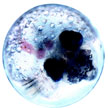 To date, the predominant focus of the nanotechnology risk research endeavor has been defining the fate, transport, and toxic properties of pristine or "as manufactured" nanomaterials. However, the high surface to volume ratio and reactivity of nanoparticles makes them highly dynamic in environmental systems. The resulting transformations of the nanomaterials will affect their fate, transport, and toxic properties. A recent review summarizes what is known about chemical, physical, and biologically mediated transformations of nanomaterials in natural systems and their effects on the resulting nanomaterial behavior.
To date, the predominant focus of the nanotechnology risk research endeavor has been defining the fate, transport, and toxic properties of pristine or "as manufactured" nanomaterials. However, the high surface to volume ratio and reactivity of nanoparticles makes them highly dynamic in environmental systems. The resulting transformations of the nanomaterials will affect their fate, transport, and toxic properties. A recent review summarizes what is known about chemical, physical, and biologically mediated transformations of nanomaterials in natural systems and their effects on the resulting nanomaterial behavior.
Jan 10th, 2013
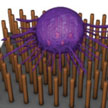 Metastasis - the process of cancer spreading from its original site to distant tissues - is caused by marauding tumor cells that break off from the primary tumor site and ride in the bloodstream to set up colonies in other parts of the body. Detecting and analyzing these circulating tumor cells (CTCs) can provide critical information for managing the spread of cancer and monitoring the effectiveness of therapies. In new work, researchers have created a Velcro-like platform which can not only capture CTCs with very high efficiency, but also release them in order to biochemically analyze them further.
Metastasis - the process of cancer spreading from its original site to distant tissues - is caused by marauding tumor cells that break off from the primary tumor site and ride in the bloodstream to set up colonies in other parts of the body. Detecting and analyzing these circulating tumor cells (CTCs) can provide critical information for managing the spread of cancer and monitoring the effectiveness of therapies. In new work, researchers have created a Velcro-like platform which can not only capture CTCs with very high efficiency, but also release them in order to biochemically analyze them further.
Jan 8th, 2013
 Human breath contains a number of volatile organic components (VOCs). An accurate detection of a specific VOC - i.e., a biomarker for a particular disease - in the exhaled breath, can provide useful information for diagnosis of various diseases. The critical advantage of exhaled breath analysis is that it allows for non-invasive disease diagnosis. Researchers have now shown that that a chemiresistive sensor can work as a VOCs sensing device to detect very low concentrations of acetone if the sensing materials have optimized morphology and microstructure.
Human breath contains a number of volatile organic components (VOCs). An accurate detection of a specific VOC - i.e., a biomarker for a particular disease - in the exhaled breath, can provide useful information for diagnosis of various diseases. The critical advantage of exhaled breath analysis is that it allows for non-invasive disease diagnosis. Researchers have now shown that that a chemiresistive sensor can work as a VOCs sensing device to detect very low concentrations of acetone if the sensing materials have optimized morphology and microstructure.
Jan 7th, 2013
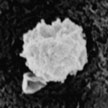 Nanotechnology is finding applications in the treatment of infectious and inflammatory diseases, particularly skin disease. These applications work in one of two ways: utilizing nanomaterials that have inherent antimicrobial properties; or incorporating known therapeutics into nanoscale vehicles to enhance delivery and improve efficacy. An ideal approach to develop a topical therapy for microbial infection in skin would combine both. Now, researchers have developed a new nanoparticle platform using chitosan for the treatment of inflammatory skin diseases such as Acne Vulgaris.
Nanotechnology is finding applications in the treatment of infectious and inflammatory diseases, particularly skin disease. These applications work in one of two ways: utilizing nanomaterials that have inherent antimicrobial properties; or incorporating known therapeutics into nanoscale vehicles to enhance delivery and improve efficacy. An ideal approach to develop a topical therapy for microbial infection in skin would combine both. Now, researchers have developed a new nanoparticle platform using chitosan for the treatment of inflammatory skin diseases such as Acne Vulgaris.
Jan 3rd, 2013
 Binders are used in fabricating lithium-ion batteries to hold the active material particles together and in contact with the current collectors. The characteristics of the binder material used are critical for the performance of the battery. In an effort to make a highly functional binder, researchers at KAIST have developed polymers conjugated with mussel-inspired functional groups (catechol groups). Catechol was found to play a decisive role in the exceptional wetness-resistant adhesion.
Binders are used in fabricating lithium-ion batteries to hold the active material particles together and in contact with the current collectors. The characteristics of the binder material used are critical for the performance of the battery. In an effort to make a highly functional binder, researchers at KAIST have developed polymers conjugated with mussel-inspired functional groups (catechol groups). Catechol was found to play a decisive role in the exceptional wetness-resistant adhesion.
Jan 2nd, 2013
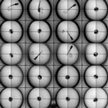 As nanotechnologies are beginning to empower our lives in so many ways, understanding the environmental health and safety aspect of nanotechnology has become a crucial issue. The lack of information on the impact of engineered nanomaterials on organisms and the environment motivates researchers all over the world to strive for a better understanding of the implications of nanotechnology applications. Researchers have now provided a mechanistic understanding on how nanomaterials affect zebrafish embryos development and specifically answers the question on what causes the embryos to fail hatching at due time.
As nanotechnologies are beginning to empower our lives in so many ways, understanding the environmental health and safety aspect of nanotechnology has become a crucial issue. The lack of information on the impact of engineered nanomaterials on organisms and the environment motivates researchers all over the world to strive for a better understanding of the implications of nanotechnology applications. Researchers have now provided a mechanistic understanding on how nanomaterials affect zebrafish embryos development and specifically answers the question on what causes the embryos to fail hatching at due time.
Dec 20th, 2012
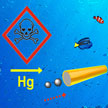 Researchers are applying various strategies to designing nanoscale propulsion systems by either using or copying biological systems such as the flagellar motors of bacteria or by employing various chemical reactions. Different practical micromotor applications, ranging from drug delivery, to target isolation and environmental remediation, have thus been reported over the past 2-3 years. Yet, there are no reports on a nanomachine-based toxicity assay approach, analogous to the use of live aquatic organisms for testing the quality of our water resources.
Researchers are applying various strategies to designing nanoscale propulsion systems by either using or copying biological systems such as the flagellar motors of bacteria or by employing various chemical reactions. Different practical micromotor applications, ranging from drug delivery, to target isolation and environmental remediation, have thus been reported over the past 2-3 years. Yet, there are no reports on a nanomachine-based toxicity assay approach, analogous to the use of live aquatic organisms for testing the quality of our water resources.
Dec 19th, 2012
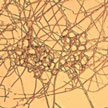 Naturally occurring nanomaterials can be found everywhere in nature - in soil, ground and surface waters, volcanic ash, ocean spray, mineral composites, smoke. Biogenic magnetite nanoparticles have even been discovered in various organisms, ranging from bacteria to human brains, with various biological functions. Researchers have discovered that nanoparticles produced by a flesh-eating fungus hold promise for stimulating the immune system and killing tumors.
Naturally occurring nanomaterials can be found everywhere in nature - in soil, ground and surface waters, volcanic ash, ocean spray, mineral composites, smoke. Biogenic magnetite nanoparticles have even been discovered in various organisms, ranging from bacteria to human brains, with various biological functions. Researchers have discovered that nanoparticles produced by a flesh-eating fungus hold promise for stimulating the immune system and killing tumors.
Dec 18th, 2012
 To date, the predominant focus of the nanotechnology risk research endeavor has been defining the fate, transport, and toxic properties of pristine or "as manufactured" nanomaterials. However, the high surface to volume ratio and reactivity of nanoparticles makes them highly dynamic in environmental systems. The resulting transformations of the nanomaterials will affect their fate, transport, and toxic properties. A recent review summarizes what is known about chemical, physical, and biologically mediated transformations of nanomaterials in natural systems and their effects on the resulting nanomaterial behavior.
To date, the predominant focus of the nanotechnology risk research endeavor has been defining the fate, transport, and toxic properties of pristine or "as manufactured" nanomaterials. However, the high surface to volume ratio and reactivity of nanoparticles makes them highly dynamic in environmental systems. The resulting transformations of the nanomaterials will affect their fate, transport, and toxic properties. A recent review summarizes what is known about chemical, physical, and biologically mediated transformations of nanomaterials in natural systems and their effects on the resulting nanomaterial behavior.
 Subscribe to our Nanotechnology Spotlight feed
Subscribe to our Nanotechnology Spotlight feed





